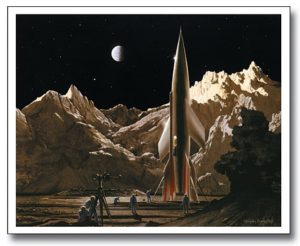(1) TRIMMED FROM THE HUGOS. Nicholas Whyte has done a study of Hugo disqualifications and withdrawals in “Booted from the Ballot: the almost-finalists in the Hugo Awards” at From the Heart of Europe. Charts and graphs! Voter turnout analysis! A truly deep dive.
In the brief downtime between announcing the Hugo final ballot, and getting voting under way (which will be Real Soon Now), I reflected that the two disqualifications and two withdrawals from the ballot this year seemed rather low by recent standards. So I looked into the records, and found indeed that of the seven years that I have been involved with running the Hugos, only one had fewer such cases – two were disqualified, and one declined, in 2021…
(2) SCIENCE FICTIONAL BLOSSOMS. “It’s Springtime on Polaris-9b, and the Exoflowers Are Blooming”. The New York Times article is behind a paywall. However, artist Vincent Fournier’s website has a gallery of images – “Flora Incognita”.
Imagine setting out for a springtime stroll. Not here on Earth but on some distant planet — call it Novathis-458b — orbiting a distant star. Even light-years from home, you recognize some familiar pleasures: The sun (albeit a different sun) is shining. The roses are in bloom. A breeze is blowing.
But these are no ordinary roses, and it is no everyday breeze. The wind clocks in at more than 15,000 miles per hour, and the flowers, Rosa aetherialis, have evolved to harness it. Their strong pink petals curl around a spiral interior that holds the plant’s reproductive organs. The spiral shape directs the supersonic wind through the center of the flower to flush out its pollen and carry it across the planet.
If roses had evolved in a place like Novathis-458b — an imaginary place, but one that bears certain similarities to real exoplanets — this is what they might look like, Vincent Fournier, a French artist and photographer, posits in his otherworldly project, Flora Incognita, which will be on display this week at the Association of International Photography Art Dealers show in New York….
(3) KAIJU IN THE HEARTLAND. [Item by Sean Mead.] Bloomington has declared June 27th as Godzilla Day to celebrate a screening of the 1954 film. “Mayor Thomson declares Godzilla Day for rare film screening” reports Indiana Public Media.
Godzilla is perhaps best known for destroying cities, but an Indiana city will celebrate him this summer.
Bloomington Mayor Kerry Thomson proclaimed June 27 as the first ever Godzilla Day.
In her proclamation last Tuesday, Thomson said the city wants to honor the original, uncut 1954 Toho Studios film screening at the Buskirk-Chumley Theater that evening….
… The original cut of the Godzilla film that will be shown at the Buskirk sat in storage for over 50 years before the studio re-released it in 2006.
The version of Godzilla familiar to most Americans was recut by distributors for American audiences. They removed 20 minutes of footage and much of the soundtrack, in addition to inserting new sequences featuring an American reporter as the main character.
“It’s a little bit more gritty, and it really talks about the realities of what had happened during the war and the atomic bombing,” Bredlau said about the original. “So much of that was sanitized for the Americans. It really took away a lot of the responsibility and heaviness of what happened in the war.” …
(4) MORE ON WILLY LEY. Andrew Porter sent along some of the comments left on the New York Times article “Willy Ley Was a Prophet of Space Travel. His Ashes Were Found in a Basement” linked in yesterday’s Scroll. (Link bypasses paywall.) Here are several excerpts, the first two from well-known sff writers.
Prof. John G. Cramer, Seattle, WA
When I was a teenager, Willy Ley wrote a regular science column in Astounding Science Fiction magazine. (It’s now called Analog, and now I write a regular science column in it.) I was a teenage physics experimenter, and I managed to wind a magnet solenoidal coil that had the shape of a Moebius Strip, a peculiar topological cylinder that has only one edge instead of two. I thought it should do something interesting, but it didn’t seem to do so. I took a picture of it and sent it to Willy Ley at Astounding, asking why it didn’t have one magnetic pole instead of two, since it only had only one edge. To my amazement, he replied with a long letter, exposing me for the first time to the ideas behind Maxwell’s Equations and explaining why my weird coil had to have two magnetic poles. Willy, I owe you a lot, and I miss you.
Al Sirois, NC
Willy Ley was a great but humble man, a far-sighted visionary who fled the Nazis. In NY he helped design and build the first interstate mail rocket, liquid fueled. You can see Pathe newsreel footage of the flight on YouTube. I built model kits of his spaceship designs when I was a kid. I interviewed his widow for a novel I later wrote about Willy and his work and his clash with Nazi spies (speculative, that last bit).
Michael Patlin, Thousand Oaks CA
My parents got to know Ley through their friends Fletcher Pratt and Sprague de Camp . Both Sci-Fi writers and space enthusiasts. Pratt was the founder of the “ Trap Door Spiders” , a literary group in NYC in the 40s and 50s amongst other endeavors .
Andrew Porter, Brooklyn Heights
In the second half of the 20th Century, Willy Ley was the go-to person for informed commentary on astronautics and space travel. Living in NYC, he was a frequent guest at science fiction conventions (where I was privileged to hear him speak), as well as being author of many authoritative books on the field. I have shared the link to this widely with the science fiction community, both to individuals and to various news sites. Hopefully we can quickly raise money to send the ashes into space.
(5) RESISTANCE AND COLLABORATION. Gita Jackson’s New York Times opinion piece says “Watching ‘Andor’ Is No Substitute for Actual Resistance”. (Link bypasses paywall.) Chris Barkley, whose own pre-review of Andor Season 2 posted today, sent the item with the comment, “I disagree with her view of Andor as a ‘feel good about ourselves” show…”
… The series’ ability to capture a radical ideology has been the source of much of the show’s critical praise. I found that seeing my own anticapitalist, anti-empire ideals reflected back to me in this show was affirming, as well as inspiring. But it also made me feel conflicted. After the creator of “Star Wars,” George Lucas, sold his production company to Disney in 2012, the series became part of Disney’s larger economic ecosystem. The company’s existing “intellectual property” — for it is always property, not art — becomes commerce: spinoffs, merchandise, theme park rides. Even the great revolutionary Cassian Andor is available for purchase as a part of “Star Tours — The Adventures Continue” at Disney World….
… I worry that for many people the consumption of this television show feels pacifying, as if watching it is a replacement for joining a protest, their fandom for the rebel alliance a stand-in for their politics in the real world. Disney wants to provide every product to you, even the language of your rebellion against Disney. What’s the point of feeling affirmed if the ultimate goal of Disney is to get you to spend more money on its brands?…
(6) HUNTINGTON HOSTS PANEL ABOUT OCTAVIA BUTLER. The Huntington in San Marino, CA celebrated Founders’ Day with a program about “Octavia E. Butler’s Seeds of Change”. Moderator Monique L. Thomas was joined by panelists Tamisha A. Tyler, John Williams, and Nikki High.

This year’s program, “Sowing Community: Living with Octavia E. Butler’s Parables,” featured a special guest panel of scholars and local leaders discussing themes of resilience, community, and social change in two acclaimed works by science fiction writer and Pasadena native Octavia E. Butler. The Huntington is the home of Butler’s archive, which has been the most frequently accessed collection in the Library for the past nine years. …
… For Nikki High, a former communications executive who opened the Pasadena bookstore Octavia’s Bookshelf in 2023, this inclusion altered her life’s course. “Reading books by Octavia Butler really did change what I expected out of sci-fi stories,” High said. “I had never really seen myself represented in those stories. … I just wanted to know, ‘Hey, where are the Black and brown people 100 years from now? What did they do to us?’ And [Butler] just made sure that she wrote us in.” …
…There was agreement among the panelists that change as represented in the books—whether the collapse of society, ecological catastrophe, or a sudden resurgence of nationalism—was a power to be shaped more than feared, especially through collective effort. Tyler spoke persuasively about Butler’s reframing of change—a seemingly determinative force in our lives that is, on the contrary, capable of being harnessed and redirected.
“One thing that I think Butler does beautifully is she restores our agency back to us, because she says, ‘All that you touch, you change,’” Tyler said. “And she gives us tools. She says, ‘Kindness eases change.’ She says, ‘Partnership is life.’”
High stressed the importance of partnership as an act of community-building, comparing it to the development of speculative worlds that is the essence of science fiction. “What literature does, and [Butler’s] sci-fi specifically, is it allows the writer to create a world, and create alternatives in this world, so that you can actually see what [social] equity might look like,” she said. “Hopefully, as you’re metabolizing this new world … you will start to ask yourself some questions about your role in world-building and to see every single decision you make as contributing to the world that you’re living in.”
Lessons From Recent Wildfires
The discussion turned to real-world examples of change and resilience, particularly the community response to the Eaton Fire that devastated Altadena—a disaster that disproportionately affected Black residents and Black creative culture.
“When you’re watching the world … burn right before your eyes, you’re forced to change,” High said. The fires dramatically altered her daily life. “But look at this change that we created. This community … was in crisis. We all came together. Everybody who was in these little, tiny circles suddenly started to open them and embrace each other.” …
(7) AI CREEP. “Oscars OK the Use of A.I., With Caveats” reports the New York Times (behind a paywall).
The Oscar gods embraced A.I. on Monday.
Sort of.
The Academy of Motion Picture Arts and Sciences said in a statement that it had updated its plethora of rules for voting and campaigning. Going forward, for instance, members must now watch all nominated films in each category before they can vote in the final round. (How will that be policed? It won’t. Voters will need to confirm on ballots that they have watched each film, but they could still lie.)
But one update stood out: For the first time, the academy addressed the use of generative artificial intelligence, a technology sweeping into the film capital yet hugely divisive in the industry’s creative ranks.
A.I. and other digital tools “neither help nor harm the chances of achieving a nomination,” the Oscar rules now state. The academy added, however, that the more a human played a role in a film’s creation, the better. (“The academy and each branch will judge the achievement, taking into account the degree to which a human was at the heart of the creative authorship when choosing which movie to award.”)
The academy had been considering whether to change its submission process to make it mandatory that A.I. use be disclosed. But it decided not to go that far.
Simply acknowledging A.I.’s creep into moviemaking is a big deal for the academy. Unions for writers and actors made protections against the technology a prominent part of recent contract negotiations. A.I. was hotly debated in Hollywood and among fans in the lead-up to the Oscars in February, after it became known that “The Brutalist,” an immigrant epic nominated for 10 statuettes, used the technology to enhance Hungarian accents. Some people defended the filmmakers, while others decried the use of A.I. as unethical.
(8) MEMORY LANE.
[Written by Cat Eldridge.]
April 22, 1992 — Quantum Leap’s “The Curse of Ptah-Hotep”
Razul: You are a student of Egypt, but you are not one of its sons. And until you have heard what I have heard and seen what I have seen, I would not expect you to believe that such a thing as a curse could be true, but it is.
Sam: 3500-year-old dead men don’t just get up and walk around.
Thirty-three years ago this evening, Quantum Leap’s “The Curse of Ptah-Hotep” first aired on NBC.
In 1957, Sam leaps into the body of Dale Conway, an American archaeologist at a dig in Egypt just as he and his partner Ginny Will discover the tomb of Ptah-Hotep. A sand storm traps them deep in the tomb’s inner chambers.
You think that they made up this particular Egypt royal person but no, he was quite real. Ptahhotep, sometimes known as Ptahhotep I or Ptahhotpe, was an ancient Egyptian vizier during the late 25th century BC and early 24th century BC Fifth Dynasty of Egypt.
The curse that forms the story here was evidently a real one that affected a number of archeological digs undertaken here. And it is worth definitely worth noting that Sam, throughout the entire series, thoroughly disbelieves in the supernatural, except for the force has him leaping around and that could be or not be science. He frequently tells Al not to be superstitious about anything. But here he certainly seems to take the resurrected mummies in this episode as a given.
The series won’t resolve whether science or something else is responsible for what’s happening to him.
It is, surprisingly, not streaming anywhere despite NBC being the network that broadcast and it being on Peacock rather recently.

(9) COMICS SECTION.
- Brilliant Mind of Edison Lee attends an advanced science fair.
- Dinosaur Comics discusses living on the moon.
- Saturday Morning Breakfast Cereal reveals our past selves would be so disappointed.
(10) COMIXOLOGY, KINDLE UNLIMITED, 3-MONTH $0.99 SALES. [Item by Daniel Dern.] Via various sources I trust, e.g.
- “Subscription to Comixology Unlimited for three months for $0.99” at ComicBuzz.
- “Best Kindle Unlimited deal: Get 3 months of Kindle Unlimited for 99 cents” at Mashable.
- “Get 3 Months for $1 on Kindle Unlimited, Comixology, Audible – And Other Deals” at The Ebook Reader.
Amazon’s ComiXology and Kindle Unlimited will be on sale, 3-months @$0.99/month, as part of the Amazon Book Sale, April 23-28, 2025.
I subscribed to ComiXology for a few months, years ago (prior to, IIRC, its acquisition by Amazon), e-gulping down vast quantities of e-comics, but, based on periodic perusals, haven’t felt inclined to re-indulge at full price… DC and Marvel e-subs, combined with Hoopla and Libby library e-borrows (e.g., re-re-reading Erik Larsen’s Savage Dragon), e-scratch that e-itch pretty well… but at this price, I’ll be re-indulging for three months.
(11) TODAY’S THING TO WORRY ABOUT. Mental Floss rates “The 10 States Most Likely to Survive an Alien Invasion”.
… Researchers from the online calculator website GIGAcalculator determined the states most likely to survive the hypothetical event. They considered factors like terrain (e.g., percentage of area covered by forests and water and number of caves), population density, and essential personnel (for example, active and inactive military workers, law enforcement officers, and engineers) per 1000 people. The website then calculated a score for each state based on these data points and ranked them to see which U.S. state has the highest chance of enduring an alien invasion. You can view the full dataset here…
… Virginia has the highest likelihood of survival, with a score of 8.06 out of 10….
Nevada has the worst rating – maybe that’s why Las Vegas was targeted in Mars Attacks?
(12) I’LL BE DAMMED. “Behold! The World’s Largest Beaver Dam” – Mental Floss has pictures.
In 2007, an ecologist named Jean Thie was scanning the Alberta wilderness with Google Earth in an effort to study permafrost thaw in the Canadian wild. But then something unusual appeared on his screen: A beaver dam so huge, it was more than twice the length of the Hoover Dam.
Located in Wood Buffalo National Park in Alberta, Canada, the world’s largest beaver dam is at least 2790 feet long. It likely contains thousands of trees and appears to have required the handiwork of at least two beaver families. It’s believed the beavers began the construction project up to three decades ago.
While it’s an impressive feat of animal engineering, the dam is not very scenic. “The hodgepodge of mud, branches, stones, and twigs is cloaked in a layer of grass, meaning it’s been there for a while,” Atlas Obscura reports. “The dam stretches across a remote wetland area, which provides the creatures with both plenty of fresh water and bountiful building materials.”
In fact, the dam is located in such an inhospitable area of Canadian swampland that it isn’t known to have been visited by humans until 2014, when Rob Mark, a member of the Explorers Club in New York City, made the trek. He began his journey in Fort Chipewyan, more than 120 miles away, and it took him five hours to cover the final mile (the ground was that boggy). “It was the only hard ground around for miles so I was happy to stand on it,” he said about reaching the dam….
(13) TRAILER PARK. “Rick and Morty gets a psychedelic season 8 trailer that declares it ‘the best high concept sci-fi rigamarole in the universe’” says GamesRadar+.
… In its own weird way, Rick and Morty is indeed the culmination of decades of pop culture, taking its cues from some of the most complex sci-fi stories around, combined with a uniquely cynical take on the classic trope of a boy and his old man scientist pal.
With Rick and Morty season eight now looming with a May 25 release date, fans won’t have to wait much longer to find out about all the trailer’s weird alt-reality versions of Rick and its many alien worlds, hopefully with some absurd (and salty) comedy along the way….
[Thanks to Andrew Porter, John King Tarpinian, Chris Barkley, Sean Mead, Daniel Dern, Jo Fletcher, Cat Eldridge, SF Concatenation’s Jonathan Cowie, Mark Roth-Whitworth, Steven French, Kathy Sullivan, Teddy Harvia, and Mike Kennedy for some of these stories. Title credit belongs to File 770 contributing editor of the day Daniel Dern.]










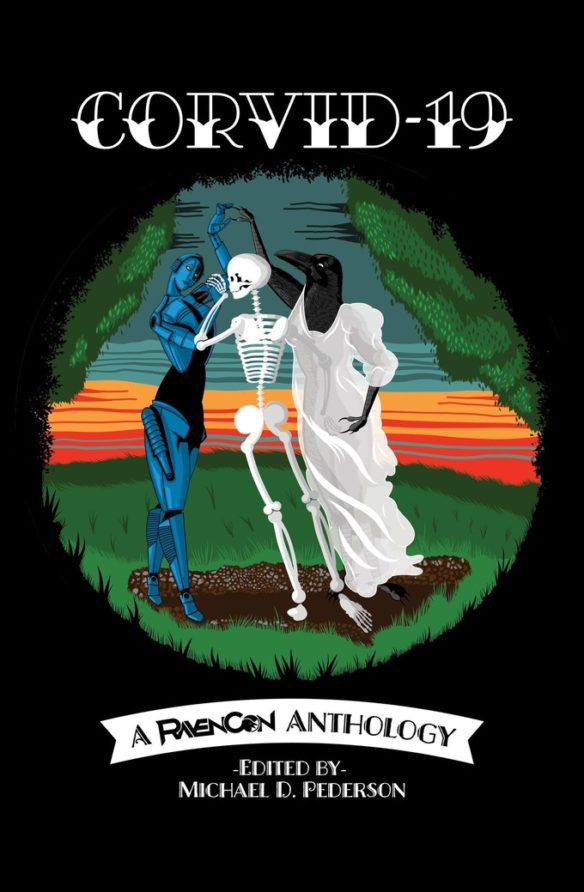
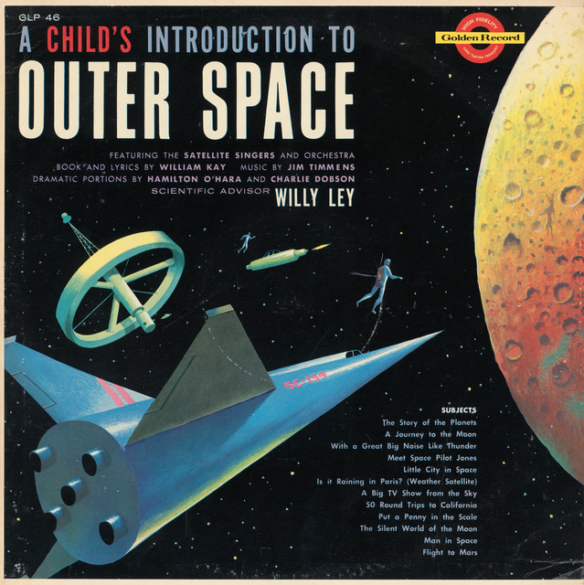
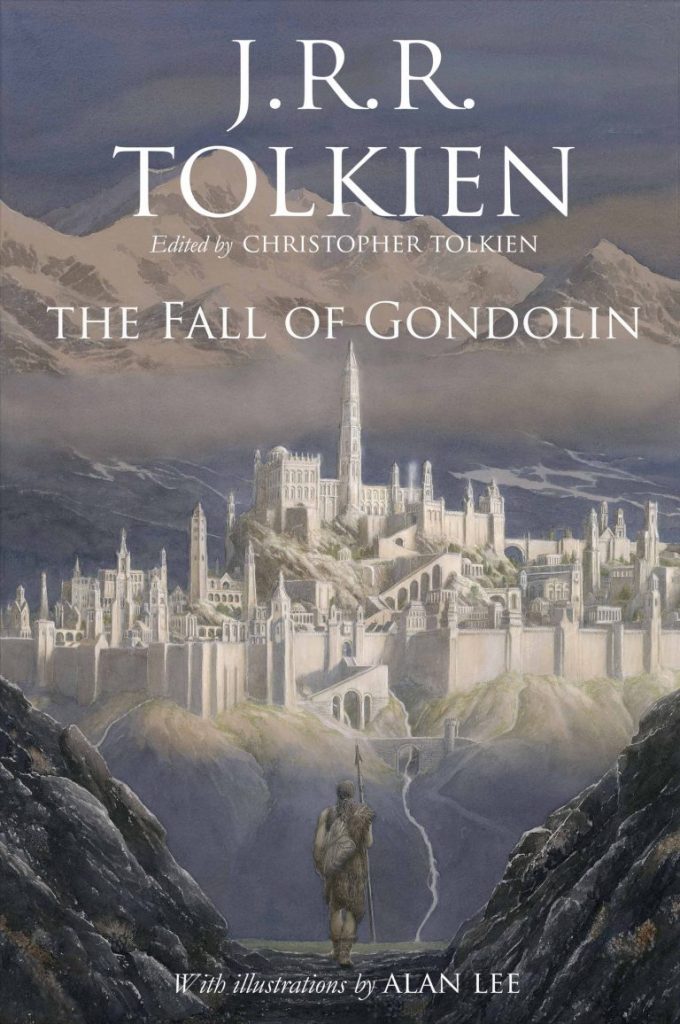

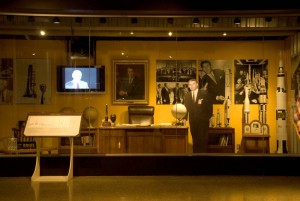
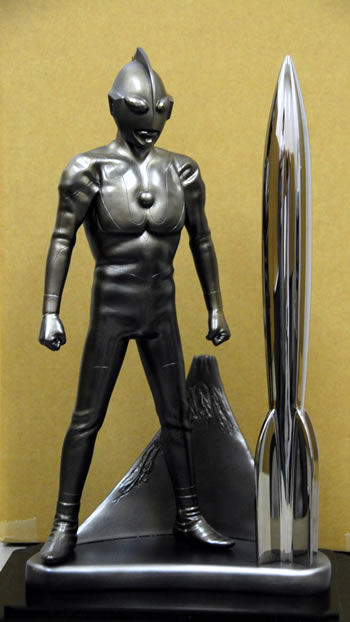
 To honor the 50th anniversary of the first Worldcon, the
To honor the 50th anniversary of the first Worldcon, the  Milton Rothman, chair of the 1953 Philadelphia Worldcon that invented the Hugo Awards, said in his article for the Noreascon Program Book that they had a lot of trouble finding someone to make the Hugo rockets. “It was Jack McKnight who came to the rescue. An expert machinist, he turned
Milton Rothman, chair of the 1953 Philadelphia Worldcon that invented the Hugo Awards, said in his article for the Noreascon Program Book that they had a lot of trouble finding someone to make the Hugo rockets. “It was Jack McKnight who came to the rescue. An expert machinist, he turned 